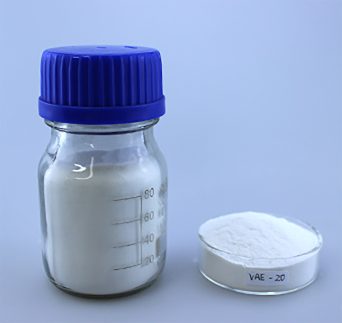
ડીસેમ્બર . 26, 2024 23:52 Back to list
applications of redispersible polymer powder
Applications of Redispersible Polymer Powder
Redispersible polymer powders (RDPs) have gained significant attention in various industries due to their versatility and functional benefits. These fine powders, derived from water-based dispersions of polymers, are specifically designed to be re-dispersed in water, allowing them to offer superior film-forming, adhesive, and protective properties. In this article, we will explore the applications of redispersible polymer powders across different sectors, highlighting their importance in construction, adhesives, paints, and various other applications.
1. Construction Industry
The construction sector is one of the primary beneficiaries of redispersible polymer powders. In cement-based materials, such as mortars and self-leveling compounds, RDPs enhance workability, adhesion, and flexibility. By adding RDPs to cement mixtures, manufacturers can produce high-quality mortars that exhibit improved performance characteristics such as reduced shrinkage, increased adhesion to substrates, and enhanced durability. The polymers also contribute to the water retention of the mixture, ensuring adequate hydration and curing of the cement.
Moreover, when used in tile adhesives, RDPs improve the flexibility and adhesion strength, making them particularly suitable for challenging substrates and environments, such as outdoor settings or areas exposed to moisture. The use of these polymers helps in preventing cracking and ensures long-lasting installations.
2. Adhesives and Sealants
Redispersible polymer powders are extensively used in the formulation of adhesives and sealants. By providing excellent bonding properties, flexibility, and resistance to environmental factors, RDPs enable the production of high-quality adhesives suitable for a range of materials, including wood, plastics, and metals. The re-dispersible nature of these powders makes them easy to incorporate into adhesive formulations without compromising the performance.
Additionally, RDPs enhance the elasticity and impact resistance of sealants, making them ideal for applications in construction and automotive industries. The improved adhesion to various substrates, combined with the ability to withstand temperature fluctuations and humidity, ensures that sealants remain effective in protecting structures over time.
3
. Paints and Coatingsapplications of redispersible polymer powder

In the paints and coatings industry, redispersible polymer powders are used to enhance the performance of formulations. They facilitate easy application and improve the adhesion of paint to surfaces, allowing for better durability and resistance to weathering. RDPs provide not only a strong film-forming ability but also impart flexibility, ensuring that the paint can withstand expansion and contraction of the substrates without cracking.
Moreover, RDPs contribute to the development of low-VOC (volatile organic compound) paints, which are becoming increasingly important in meeting environmental standards. By using redispersible polymer powders, manufacturers can produce water-based paints that perform well while minimizing the release of harmful solvents into the atmosphere.
4. Building Materials
Beyond traditional construction applications, redispersible polymer powders are also used in innovative building materials. They play a vital role in the development of pre-mixed and ready-to-use products that require minimal on-site mixing. This contributes to efficiency and consistency in construction processes.
Additionally, RDPs are finding applications in the production of thermal insulation systems, providing excellent adhesion and mechanical properties to insulated panels and external thermal insulation composite systems (ETICS). By improving the energy efficiency of buildings, RDPs contribute towards greener construction practices.
5. Other Applications
Outside the construction sector, redispersible polymer powders are also utilized in the formulation of personal care products, pharmaceuticals, and textiles. In personal care, RDPs can be found in cosmetics and skincare products, providing stability and enhancing textures. In pharmaceuticals, they are used as excipients to improve drug delivery systems. In textiles, these powders contribute to fabric coatings that enhance water resistance and durability.
Conclusion
The versatility of redispersible polymer powders makes them invaluable across a myriad of applications, from construction and adhesives to paints and personal care products. Their ability to enhance performance characteristics such as adhesion, flexibility, and weather resistance ensures they remain an integral component in the development of high-quality, sustainable materials. As industries strive for innovation and improved sustainability, the demand for RDPs is expected to grow, solidifying their role in the formulation of advanced materials for the future.
-
Versatile Hpmc Uses in Different Industries
NewsJun.19,2025
-
Redispersible Powder's Role in Enhancing Durability of Construction Products
NewsJun.19,2025
-
Hydroxyethyl Cellulose Applications Driving Green Industrial Processes
NewsJun.19,2025
-
Exploring Different Redispersible Polymer Powder
NewsJun.19,2025
-
Choosing the Right Mortar Bonding Agent
NewsJun.19,2025
-
Applications and Significance of China Hpmc in Modern Industries
NewsJun.19,2025







